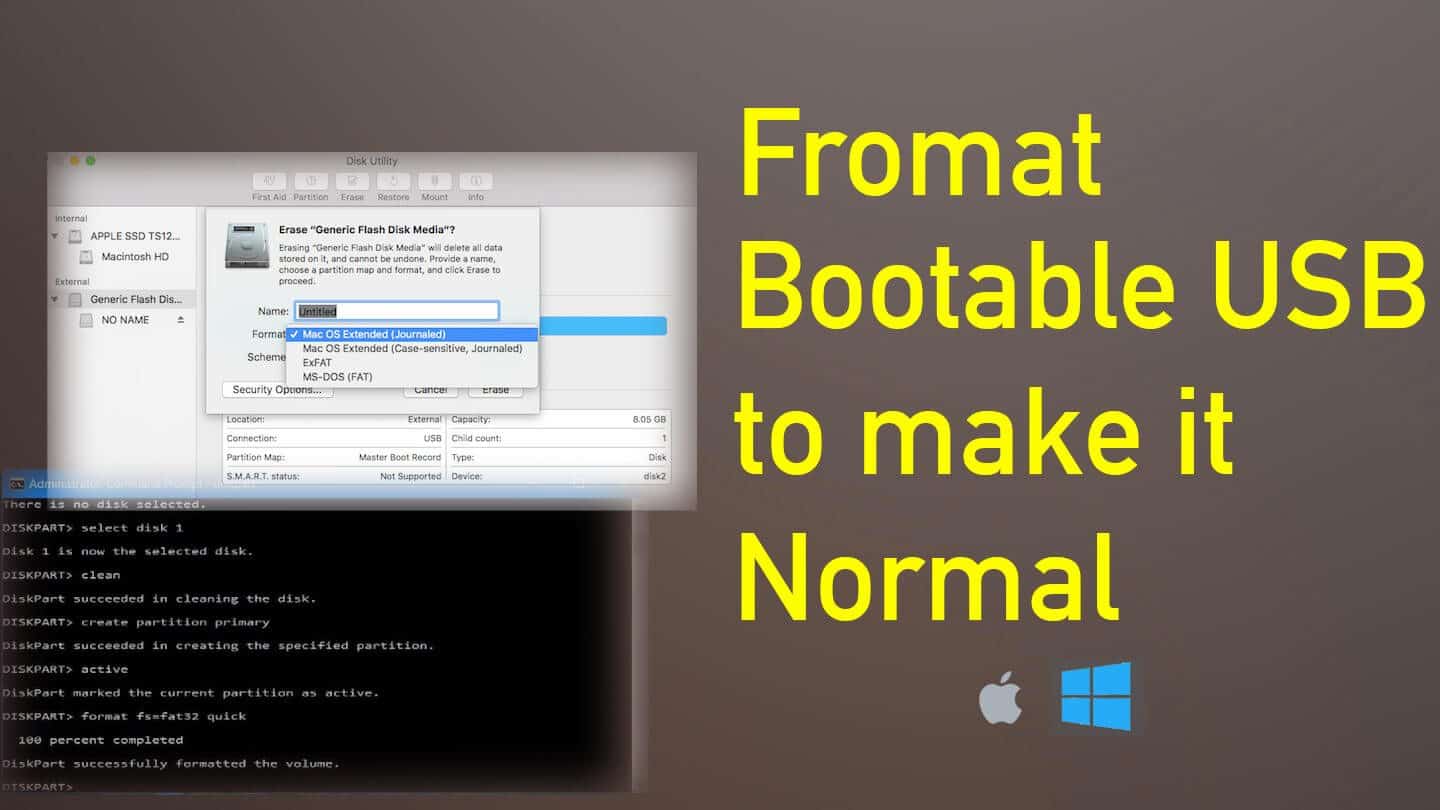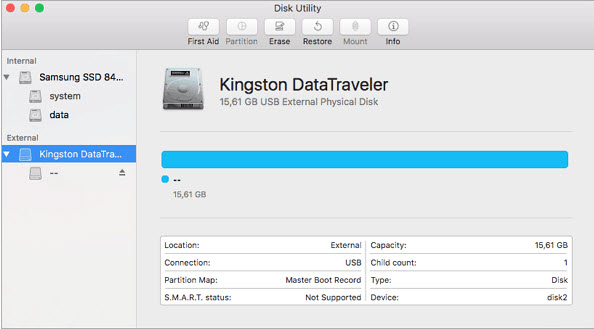

- #Ms dos or mac os extended for usb how to#
- #Ms dos or mac os extended for usb mac osx#
- #Ms dos or mac os extended for usb install#
- #Ms dos or mac os extended for usb portable#
While you can only use an Apple file system like APFS and Mac OS Extended for your main system drive, another file system is also worth considering for external drives-ExFAT.ĮxFAT is an older file system from Microsoft, intended to replace the even older FAT32 file system used with Windows system drives before the switch to NTFS in Window XP. You can format a drive with HFS+ using the macOS Disk Utility app, which you can launch from the Launchpad ( Other > Disk Utility). With that in mind, and for cross-compatibility, you may decide to use HFS+ over APFS. If you’re using an older, mechanical drive with a disk platter, those enhancements may seem largely minimal or non-existent.
#Ms dos or mac os extended for usb portable#
Many of the speed and performance enhancements that APFS brings rely on using a high-speed SSD or portable flash memory drive. Other than functionality, however, there are still a few legitimate reasons why you’d choose HFS+ over APFS-the biggest reason depends on the type of drive you use. You’ll also need to consider Mac OS Extended if you’re using older and newer Macs together, as older versions of macOS won’t support APFS. You’ll need to use HFS+ if you plan on formatting a second hard drive or portable flash drive for use as a Time Machine backup-APFS drives won’t work. While Mac OS Extended (HFS+) is no longer the default file system for macOS installations, it hasn’t been completely abandoned by Apple, and it’s still a useful option for macOS users under certain conditions.Īs we’ve mentioned, HFS+ is the default file system of choice for macOS Time Machine backup drives.
#Ms dos or mac os extended for usb install#
Choosing Mac OS Extended (HFS+) for Hard Drives Simply plug the USB flash drive into your computer, run Rufus, select the device that you want to install DOS onto, make sure the file system is FAT32, check there’s a tick next to Create a bootable disk using: and select either FreeDOS or MS-DOS from the drop down menu. However, for most users, APFS is the only file system they’ll need or want to use – but only if they’re (only) using modern Mac devices. If you attempt to use an APFS-formatted drive, macOS will want to format it to HFS+ before you can proceed.Īlong with APFS and Mac OS Extended (also called HFS+), you also have other file systems that can be used for external drives, including cross-platform options like ExFAT. macOS continues to use the HFS+ file system for Time Machine drives for the time being. If you back up your Mac using Time Machine, you won’t be able to use APFS, either.

If you have an older Mac, you’ll need to keep using Mac OS Extended or use an alternative like ExFAT instead. Thanks.The biggest downside to using APFS is that Macs with older macOS versions (macOS 10.12.6 Sierra and older) can’t read, write, or otherwise access drives that use it. If anyone has any suggestions on what I can do, I would greatly appreciate it. On the partition tab, I do not have the choice to create an MS-DOS or FAT partition, nor do I have an options button below the graphic of the partition scheme. This makes the external HDD readable on the Linux PC.

When I am in Disk Utility, Erase tab, I have the option to erase the disk with an MS-DOS File System Volume Format, which I have done.
#Ms dos or mac os extended for usb how to#
I have been informed that if I reformat the drive into a single FAT partition, I will be able to write to it from the Linux OS on my PC, and I have done the research to figure out how to use my Mac laptop to do this, but I don't seem to have that option. However, I am having trouble getting the Linux OS to recognize my external HDD. To be more specific about my predicament, I currently have a desktop PC and a Mac laptop, but my version of Windows XP has crashed an I am using a Linux boot disk to try and recover the files from the PC internal hard drive. It will not be used for any large files, but rather a lot of smaller files. I am aware of the file transfer size limitations of the FAT format.
#Ms dos or mac os extended for usb mac osx#
The mac I am using is a 3.5 year old ibook, mac osx version 10.3.9.


 0 kommentar(er)
0 kommentar(er)
